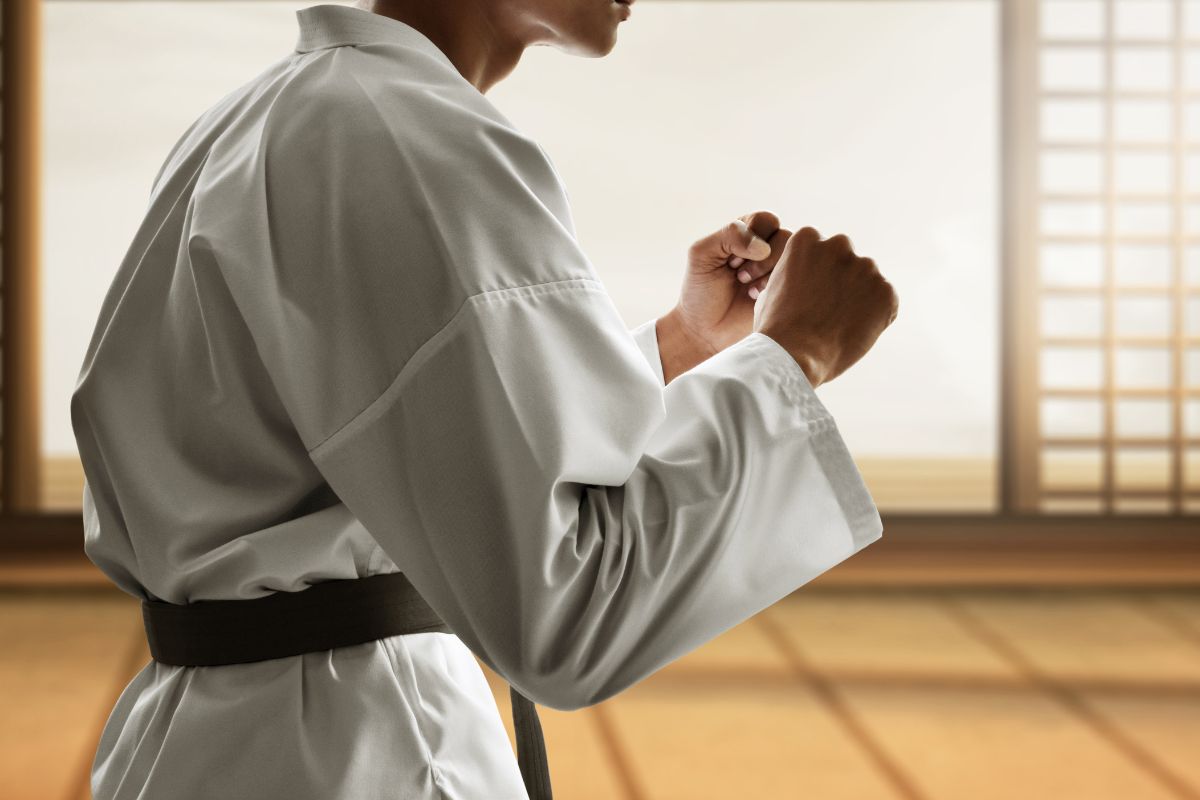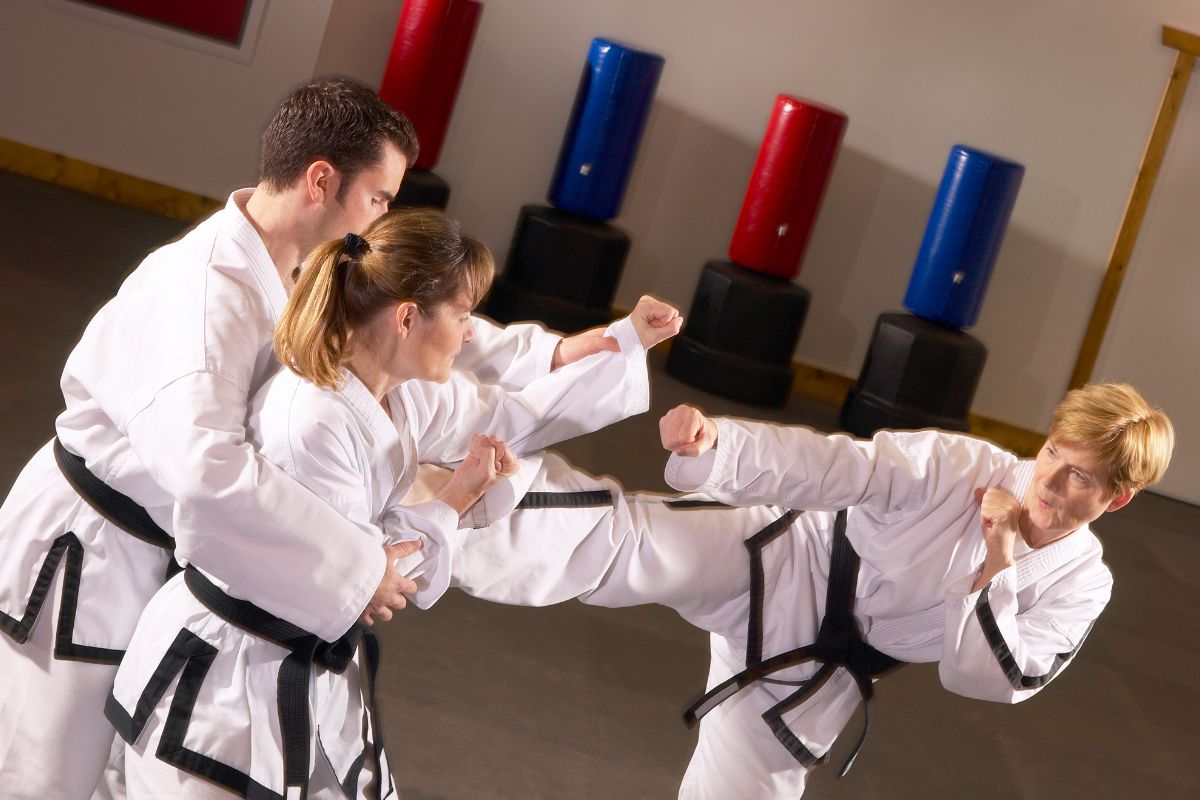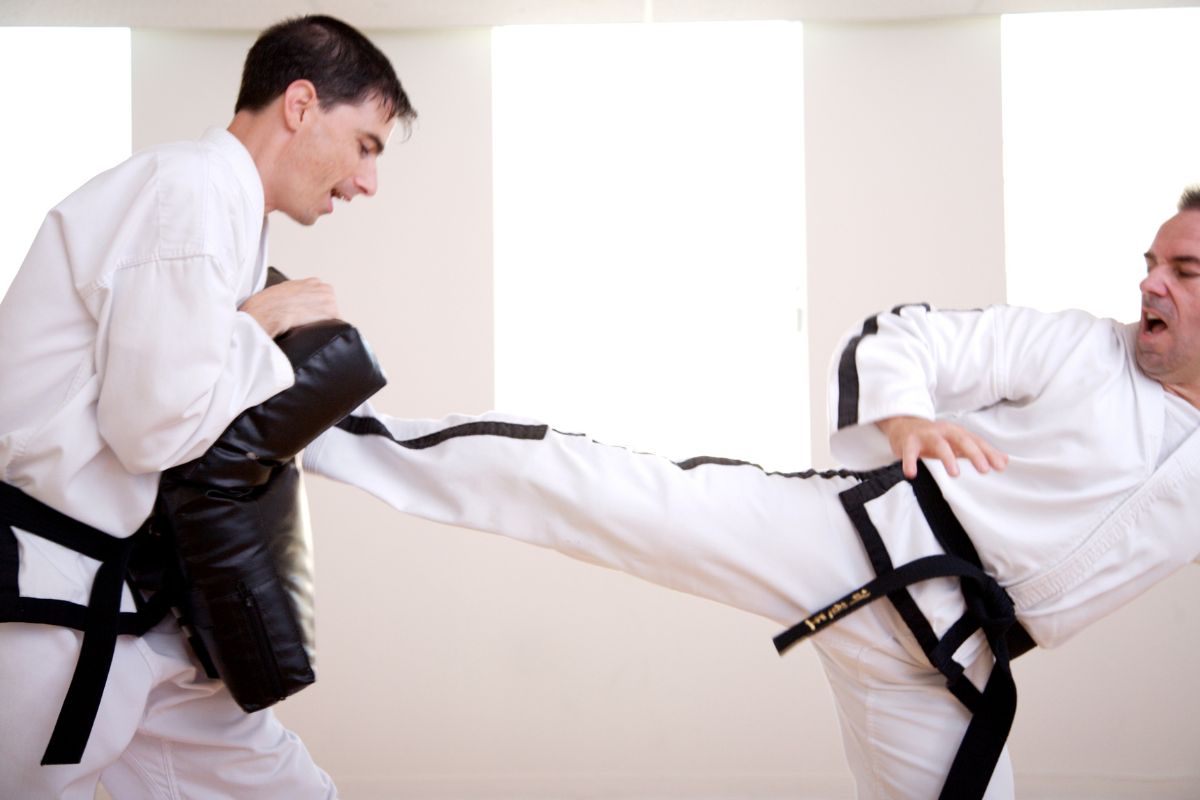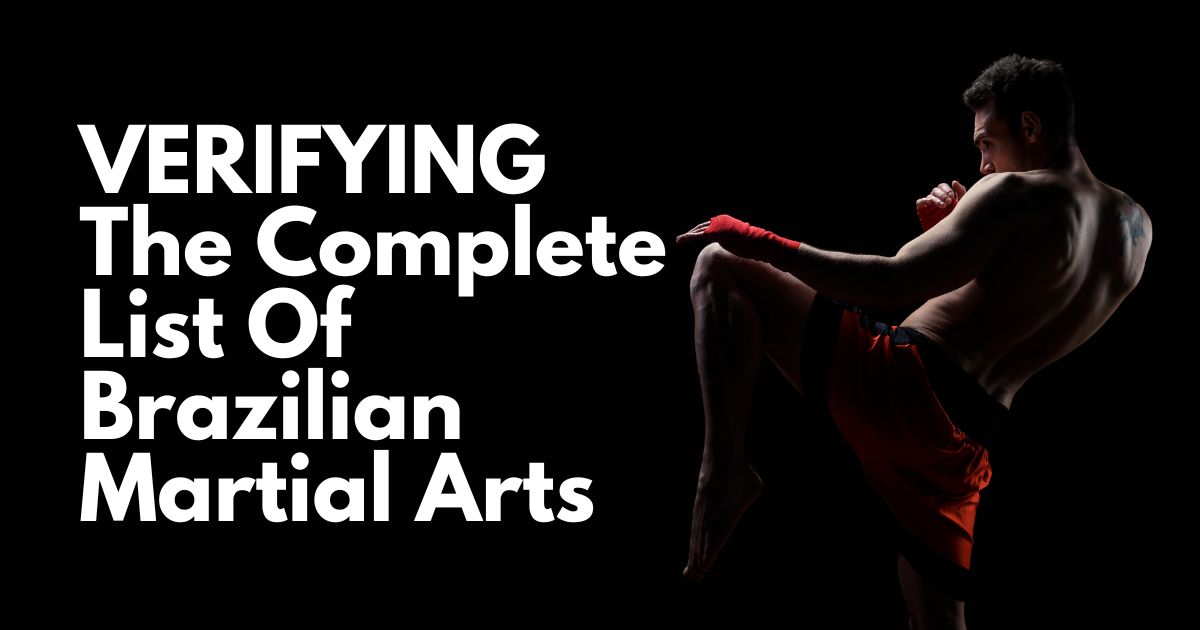The History of Brazilian Martial Arts
“Martial art is not for hurting people; it’s for protecting people.” Jackie Chan coined this statement, and it’s true. The origin of Brazilian martial arts, such as capoeira, not only started as a form of self-defense in Brazil but also to keep culture and spirituality among enslaved Africans who desired freedom in plantations. Keep on reading to find out the styles in the next section.

A List of Brazilian Martial Arts
There are several variations of Brazilian martial arts. One might practice beautiful acrobatics with musical accompaniment or ground fighting techniques.
These Brazilian martial arts are advisable for many users, including bodyguards and women.
The systems of martial arts that either originated in Brazil or were developed there include the following:
Capoeira
What is Capoeira? It is a Brazilian martial art focusing on punches, kicks, knee strikes, and avoiding assaults. It is a quick and fluid martial art form. It also combines Brazilian martial arts dance.
Additionally, Capoeira resembles dancing because enslaved Brazilians were allowed to participate in this martial technique before their colonial masters while claiming they were dancing.
Capoeira students are continuously moving, either to escape an assault or to position themselves for one, but where did Capoeira originate? If you are asking yourself this question, keep scrolling through this article to know the origin of this type of Brazilian martial art.
The History of Capoeira
Enslaved people developed Capoeira in Brazil as a method of self-defense. Like every martial art, the skill level of the Capoeirista determines the Capoeira’s usefulness for self-defense.
Capoeira helps to improve one’s capacity to respond swiftly. This type of Brazilian martial arts is incredibly effective in a battle where a player with good experience uses it. Capoeira is a martial technique that focuses on survival through whatever means necessary.
Those same enslaved people developed the first version of Capoeira to boost their chances of release and independence; when the enslavers weren’t watching, they could practice self-defense while also engaging in folk dance.
When the enslaved people escaped, they settled in small villages known as Quilombos. Quilombos dos Palmares was the most well-known of Zumbi’s Quilombos.
Moreover, there was the abolition of slavery in Brazil on May 13th, 1888, because the Brazilian government thought ex-slaves would band together and use Capoeira to rise against the government. Capoeira became illegal, and the police had to arrest anyone doing it.
Practicing capoeira in secret and under the disguise of dance was necessary to preserve the Capoeira tradition. A martial art and dance developed in Brazil due to those practices.
On top of that, the ex-slaves made every effort, in secret, to preserve the custom, and after presenting it as art, it was readily available in society. The only way to identify capoeiristas at that time was through their nicknames, which became harder for the police to locate and arrest them.
Importance of Capoeira
Some of the benefits of practicing Capoeira include the following:
- Boosts confidence: After mastering risky moves, you can enhance your confidence and still feel more confident everywhere you go!
- Ability to balance: Capoeira helps you develop your body’s (and mind’s) extraordinary sense of balance by practicing handstands, headstands, and flips!
- Increases flexibility: The routines and exercises will sooner or later result in an improvement in flexibility. You can understand it even if you are not an expert, much as with yoga.
- Builds strength: Most upper and lower body motions used in capoeira stimulate your core muscles and create resistance, which helps you get stronger.
- Encourages coordination: With capoeira, you can learn a lot of complex moves, including dances, kicks, escapes, acrobatics, and never-ending sequences.
Capoeira Music
Capoeira would not exist without music. It is an essential element of the “Game.” It determines the tempo of the full match. Several spectators gather around the contestants clapping and singing. This music is known as “Roda.” If you use it collectively, the instruments usually consist of the following:
- Agogo: It has a u-shaped metal piece that connects two bells. One must hit the bells with metal to hear the sound.
- Pandeiro: this instrument is a wooden drum with an animal skin covering on top. Not only limited to Capoeira. Samba music also uses it.
- Berimbau: this instrument is available in several sizes and makes various noises, courtesy of using wire, sticks, and gourds. The Berimbau came from Africa before becoming well-known in Brazil.
- Atabaque: this instrument is about one meter and a wooden drum that comes in several sizes and makes a range of sounds, just like the Berimbau.

Brazilian Jiu-jitsu
Brazilian Jiu-Jitsu is a martial art that emphasizes grappling and fighting on the ground. In Brazilian martial arts, jiu Jitsu the defender is brought to the ground and submits using a choke or joint lock in the opening defense.
In addition to that, you can use strikes and kicks to create openings. This martial arts style has played a significant part in the growth of MMA Brazilian jiu-jitsu all through the years, but before going further, is Brazilian jiu Jitsu the best martial art? Keep on reading to find out.
The following are some of the reasons that make the martial arts Brazilian jiu Jitsu the best of all:
It Transforms Your Life
Brazilian jiu-jitsu has a greater influence on your life off the mats as you practice it more frequently. It teaches you to have a positive outlook on life and keep your eyes on the broader picture.
The strategy itself is a lifelong learning process. Like in life, you will never achieve that perfection or the ultimate aim. Therefore, a person must understand that there is more to life than battling and winning.
Jiu-jitsu also helps you develop the self-discipline you need to tackle life’s challenges and the confidence you need to be successful in whatever you do. Although it may seem strange, struggling through the classes makes life much simpler. You will understand how to overcome it and enjoy life, whether you have lost your career or the woman of your dreams.
Brazilian Jiu-Jitsu is Very Enjoyable
Brazilian jiu-jitsu is enjoyable because of its unique blend of history, effort, and optimism regardless of age; it enables you to find happiness and your genuine self.
It’s always possible to start practicing. People between 60 and 80 attend classes and enjoy themselves in academies worldwide.
Compared to other martial arts, jiu-jitsu has a very low injury risk. Whatever occurs, you may tap, take a long breath, and quickly reverse circumstances without suffering any harm. It is impossible to be knocked out and sustain long-term brain damage.
It Educates You on How to Remain Calm Under Stress
The desire to learn how to remain calm under pressure is a significant reason for many to join martial arts.
Many circumstances in jiu-jitsu might be stressful because there are only two main fighting styles: defensive and offensive. You would typically spend 50% of your time fighting against attacks. The key to survival is maintaining composure and mental alertness.
You automatically apply this mental skill to other stressful situations once you master it in grappling. Maintaining composure under pressure benefits all money, relationships, or business cases.
You need to discover your calm place inside of yourself as you develop as a jiu-jitsu practitioner; you won’t be able to appreciate being in challenging circumstances.
Encourages Healthy Living
Jiu-Jitsu requires more than attending classes to become proficient. It also entails maintaining a healthy diet and a fit physique to work out more effectively. BJJ encourages the development of positive habits.
While practicing Brazilian jiu-jitsu, you will be able to maintain a healthy diet and a strong and flexible body to avoid injuries that come easily, especially if you want to develop your grappling technique without taking breaks for illness or injury recovery. This martial art style will consume you but get you healthy and fit.
It Encourages Mentorship
Brazilian Jiu-Jitsu’s belt system creates a logical hierarchy of genuine talent and experience. Through consistent practice, you can earn Jiu-jitsu belts. Therefore, those who progress in art often have a degree of knowledge that lower belts aspire to get.
People who have completed rigorous training have a greater sincerity and willingness to share their experience and knowledge. A higher belt will often take a lower belt under their wing and train them in everything they know to accomplish goals, as you would expect from a mentor.
Vale Tudo
Vale Tudo is a martial style that depends mostly on grappling but integrates moves from Brazilian mixed martial arts, like Thai boxing. Throughout Brazil, shows and circuses were where fighters from different martial styles fought. In the 1920s, there was the introduction of Vale Tudo. However, by the 1960s, it had become an underground event because of Vale Tudo’s no holds barred style, which they saw as excessively brutal.
Luta Livre
Luta Livre is a Brazilian martial art known as “Free Fighting” in Portuguese. This martial style also employs several kicks and strikes.
Nevertheless, this Brazilian martial art is no longer as popular as Brazilian Jiu-Jitsu. Many well-publicized defeats in 1980s tournaments to BJJ practitioners damaged Luta Livre.
Types of Luta Livre
Some of the Luta Livre types include the following:
- Luta Livre Vale Tudo: This is Brazilian mixed martial arts, which took place before the UFC gained popularity. That is, no-gi submission grappling combined with striking.
- Luta Livre Esportiva: This particular kind of Luta Livre is no-gi submission grappling. Although it originated separately in Brazil, it shares a similar look to catch wrestling.
Objectives of Luta Livre
In Luta Livre, the objective is to knock down and surrender the opponent quickly. Then again, since you can learn striking, the aim may be to stop an attacker with blows. The option would be for the former because Luta Livre is largely a grappling art.

That’s a Wrap
In summary, after reading this article, Brazilian martial arts are useful for self-defense. Choosing the right one is vital to help you fight attackers on the streets or if you find yourself in dangerous circumstances.

